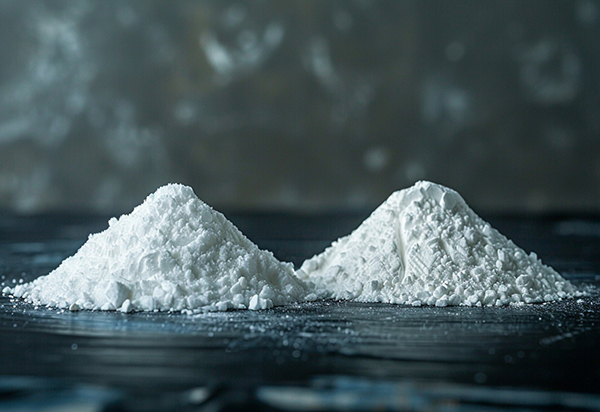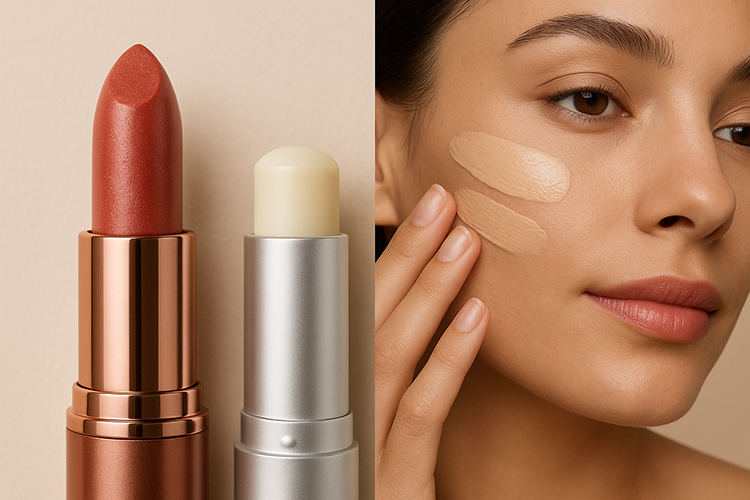Comparing Alumina and Corundum: From Raw Form to Crystal Clarity
Introduction
In the realm of advanced ceramics, alumina (Aluminum Oxide, Al2O3) and corundum, a crystalline form of alumina, stand out for their exceptional properties and versatility. These materials are pivotal in a myriad of applications, from cutting-edge electronics to robust mechanical parts. This article embarks on a detailed comparison of alumina and corundum, tracing their journey from raw extraction to their refined, crystal-clear forms. By delving into their characteristics, applications, and the technological advancements shaping their development, we offer insights into why and how these materials play a crucial role in modern engineering and technology.
Here is a QUICK GUIDE for this article:
- Understanding Alumina and Corundum
- From Raw Form to Refined Material
- Physical and Chemical Characteristics
- Applications in Industry
- Future Trends and Advancements
Understanding Alumina and Corundum
Alumina and corundum are two faces of the same coin, yet they serve distinct roles across various industries. At its core, alumina is a white or nearly colorless crystalline substance used extensively in technical and industrial applications. Corundum, known for its hardness and thermal resistance, is the crystalline form of alumina and is found in precious gem varieties like sapphires and rubies, distinguished by their impurities.
Table 1: Basic Properties of Alumina and Corundum
|
Property |
Alumina (Al2O3) |
Corundum |
|
Color |
White/Transparent |
Varies (Colorless, Red, Blue, etc.) |
|
Hardness (Mohs) |
9 |
9 |
|
Melting Point |
2,072°C |
2,045°C |
|
Thermal Conductivity |
30 W/mK |
25-35 W/mK |
Key Differences and Similarities:
- Both alumina and corundum exhibit high hardness and thermal resistance, making them ideal for abrasive and refractory applications.
- The color variation in corundum, due to trace impurities, contrasts with the typically white appearance of technical-grade alumina.
From Raw Form to Refined Material
The journey of transforming alumina and corundum from their raw, natural states into refined materials suitable for industrial use is a marvel of modern science and engineering. This transformation is critical, as the purity and form of these materials directly influence their performance in various applications.
Extraction and Refinement
- Alumina: Primarily extracted from bauxite ore through the Bayer process, which separates alumina from bauxite using caustic soda and high temperatures. The resulting white powder, alumina, is then subjected to further purification processes to achieve the desired quality.
- Corundum: Natural corundum is mined directly as a gemstone or mineral. For industrial use, synthetic corundum is produced by melting alumina at high temperatures in electric arc furnaces, allowing for the creation of large, single crystals.
Technological Advancements
Recent advancements in material science have significantly improved the efficiency and effectiveness of these processes. Innovations in chemical extraction and purification techniques have led to higher purity levels of alumina, enhancing its performance in electronics and other high-tech applications. Similarly, the development of controlled growth environments for synthetic corundum has improved the quality and size of the crystals produced, making them more suitable for precise applications such as laser optics.
Challenges and Solutions
Despite these advancements, the production of high-purity alumina and corundum faces challenges, including energy consumption and environmental impact. Researchers are exploring more sustainable methods, such as using renewable energy sources for processing and recycling industrial waste to extract valuable materials.
Physical and Chemical Characteristics
Alumina and corundum, while chemically identical, manifest their shared formula Al2O3 in remarkably diverse ways, leading to a broad spectrum of applications. This section explores the nuanced physical and chemical characteristics that distinguish each material.

Alumina (Aluminum Oxide, Al2O3)
Alumina, in its purest form, is known for its excellent electrical insulation properties and thermal conductivity, making it a staple in the electronics industry. Its ability to withstand high temperatures without compromising structural integrity or performance is remarkable.
- Thermal Properties: Alumina's thermal conductivity is a critical factor in its use in heat dissipation applications. Depending on purity, it can range from 24 to 30 W/(m·K), which is significantly higher than many ceramics.
- Mechanical Strength: The material exhibits good mechanical strength and hardness, making it suitable for applications requiring wear resistance and durability.
- Electrical Insulation: High-purity alumina is an excellent electrical insulator, with a volume resistivity of over 10^14 ohm·cm, beneficial in electronic substrates and insulators.
Corundum
Corundum, the crystalline form of alumina, is prized for its hardness and thermal stability. It is second only to diamond in terms of natural hardness, making it ideal for abrasive applications. The presence of trace elements can impart vivid colors to corundum, leading to its use as a gemstone in addition to industrial applications.
- Hardness: With a Mohs hardness of 9, corundum is utilized in applications requiring extreme abrasion resistance, such as sandpaper and cutting tools.
- Thermal Stability: Corundum maintains its strength at high temperatures, making it suitable for furnace linings and thermal barrier coatings.
- Optical Properties: The varying colors of corundum, from sapphires to rubies, are due to trace impurities. These optical properties are exploited in laser technology and in creating scratch-resistant watch faces.
Comparative Analysis
While both alumina and corundum are celebrated for their durability and resistance to high temperatures, their applications diverge due to differences in purity, coloration, and structural formation. Alumina's versatility in electronics and industrial components contrasts with corundum's niche in abrasives and optics, showcasing the adaptability of Al2O3-based materials to meet specific technological and aesthetic needs.
Table 2: Comparative Analysis of Alumina and Corundum
|
Property |
Alumina (Al2O3) |
Corundum |
|
Color |
White/Transparent |
Varies (due to impurities) |
|
Hardness (Mohs) |
9 |
9 |
|
Thermal Conductivity (W/mK) |
24-30 |
Similar, but varies with purity |
|
Melting Point (°C) |
~2,072 |
~2,045 |
|
Electrical Insulation |
Excellent, with high volume resistivity |
Not applicable for pure corundum |
|
Optical Properties |
Mostly colorless |
Color variations due to impurities |
|
Applications |
Electronics, medical devices, industrial components |
Abrasives, optical components, gemstones |
This table encapsulates the physical and chemical distinctions and similarities between alumina and corundum, highlighting their respective applications driven by these properties.
Applications in Industry
The unique properties of alumina and corundum, such as their hardness, thermal stability, and electrical insulation, have made them indispensable in various industrial applications. This section explores the diverse uses of these materials, highlighting how their characteristics serve different industries.
Alumina Applications:
- Electronics: Due to its excellent electrical insulation and thermal conductivity, alumina is widely used in electronic substrates, integrated circuit (IC) packages, and insulating bushings. Its ability to dissipate heat effectively protects sensitive electronic components.
- Medical Devices: The biocompatibility of alumina makes it ideal for medical implants, such as hip replacements and dental prostheses. Its wear resistance ensures the longevity of these devices within the human body.
- Industrial Components: Alumina's mechanical strength and resistance to wear and corrosion make it suitable for use in pump seals, nozzles, and other components that require durability and resistance to harsh conditions.
Read more: Uses of Alumina in The Field of Ceramics
Corundum Applications:
- Abrasives: The extreme hardness of corundum is utilized in abrasive products like grinding wheels, sandpaper, and cutting tools. It is especially valued in processes requiring precision and minimal material wear.
- Optical Components: Synthetic corundum's clarity and color variations are used in laser optics and scratch-resistant watch faces. Its optical properties are crucial in applications demanding high precision and durability.
- Gemstones: Beyond industrial uses, natural corundum variants, such as sapphires and rubies, are prized in the jewelry industry for their beauty and rarity.
Table 3: Applications of Alumina and Corundum
|
Material |
Application |
Key Property |
|
Alumina |
Electronics |
Electrical Insulation |
|
Medical Devices |
Biocompatibility |
|
|
Industrial Components |
Mechanical Strength |
|
|
Corundum |
Abrasives |
Hardness |
|
Optical Components |
Optical Clarity |
|
|
Gemstones |
Color Variability |
This table encapsulates how the intrinsic properties of alumina and corundum are leveraged across different sectors, underlining the versatility and importance of these materials in modern technology and industry.
Future Trends and Advancements
The future of alumina and corundum in advanced ceramics is marked by promising research and technological innovations. Sustainable manufacturing processes and the development of materials with enhanced properties are at the forefront of this evolution. Nanotechnology is poised to revolutionize the performance of these ceramics, offering increased strength and durability. Moreover, the exploration of alumina and corundum composites with other materials could yield breakthroughs in thermal conductivity and wear resistance, opening new applications in electronics, aerospace, and beyond. The relentless pursuit of advanced ceramics research ensures that alumina and corundum will continue to play a pivotal role in the technological advancements of the future.
Conclusion
In summarizing our exploration into alumina and corundum, it becomes evident that these advanced ceramics are indispensable in numerous applications, from high-tech industries to everyday products. Their unique properties—thermal stability, hardness, and electrical insulation—highlight their critical role. As we look forward, ongoing innovations and research promise to enhance these materials further, ensuring their relevance and utility continue to expand. The journey from their raw form to applications that capitalize on their crystal clarity encapsulates the essence of material science's impact on modern technology and industry.
Advanced Ceramic Materials (ACM), a leading ceramic supplier, plays a pivotal role in providing high-quality alumina and corundum ceramics that meet the diverse needs of these applications.
Read more: Corundum vs. Alumina vs. Cordierite vs. Mullite: A Deep Dive into Ceramics
{{item.content}}
LEVE A REPLY
{{item.children[0].content}}
{{item.content}}
LEAVE A REPLY
SUBSCRIBE OUR NEWSLETTER
- Boron Nitride in Cosmetics: Enhancing Performance and Sensory Appeal
- Maximize MOCVD Yield and Purity with Hexagonal Boron Nitride Setters
- What Are the Advantages and Uses of Boron Nitride Ceramic Sheet?
- The Compression Annealing Advantage for Pyrolytic Boron Nitride
- Beyond Insulation: The Surprising Spectrum of Ceramic Thermal Conductivity











